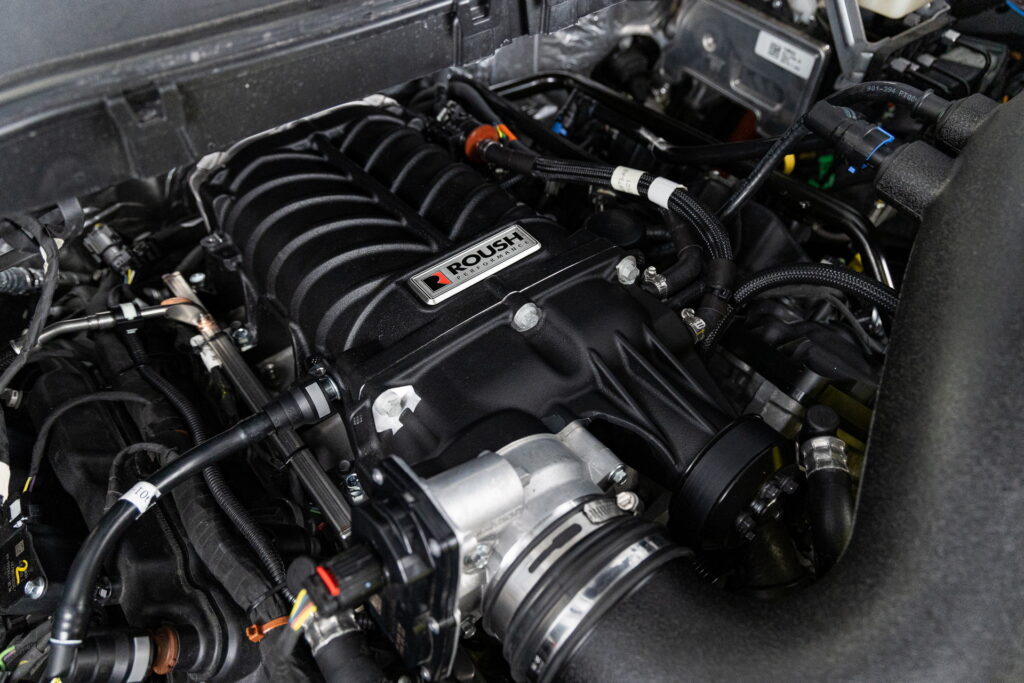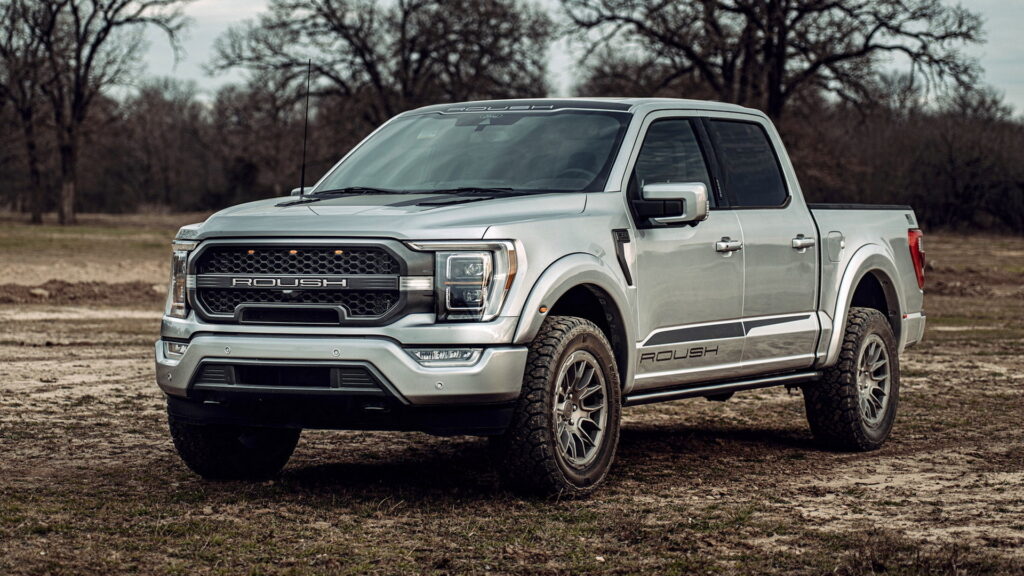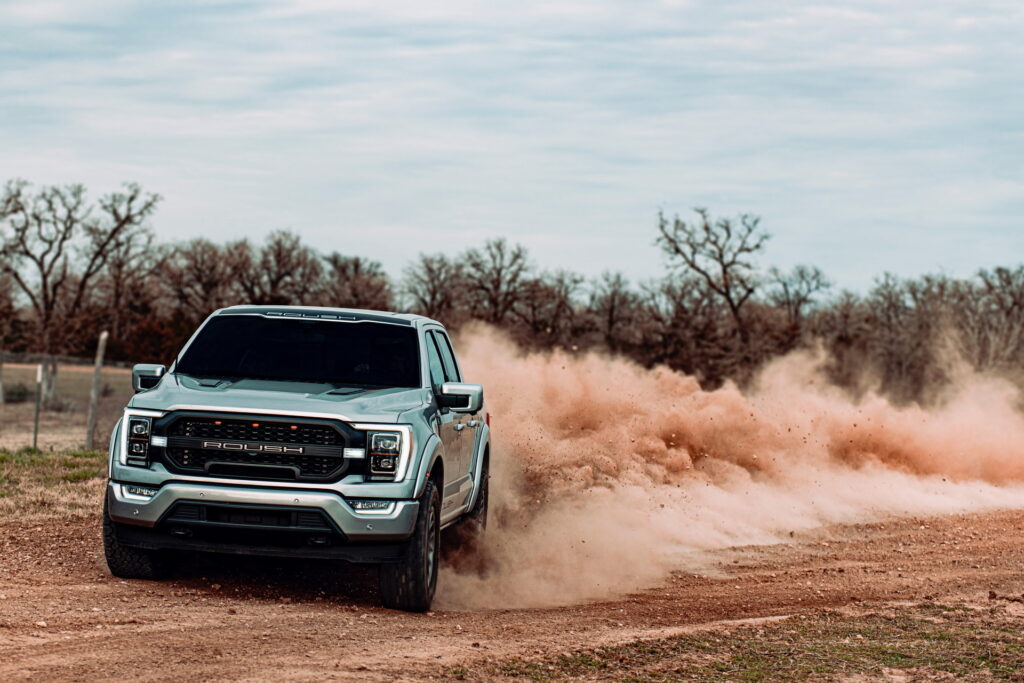The Ford F-150 Raptor R is one of the most aggressive and powerful trucks ever in the American market. With that exclusivity and power come hefty markups and high price tags. Now, anybody with a 5.0-liter V8-powered late model F-150 can get Raptor R levels of power without having to spend that kind of cash.
Keep in mind that the Raptor R that you’ll get from Ford makes 700 hp (521 kW) and 640 lb-ft (866 Nm) of torque from a 5.2-liter supercharged V8. Roush says that this new supercharger kit will give the abovementioned F-150 owners 705 hp (525 kW) and 635 lb-ft (859 Nm) of torque.
While those numbers are assuming a 20 percent drivetrain loss, they’re still incredibly impressive. That’s not far from the 17 percent loss documented on the Raptor R. Roush pulls off this feat with a comprehensive package including a 2.65-liter supercharger, a low-temperature radiator, a billet-aluminum viscous crankshaft dampener, and unique spark plugs optimized for forced induction.
More: Roush Gets Its Hands On A Polaris Slingshot For A New Special Edition

The entire kit will run you $8,649.99 and requires installation on top of that. Still, it’s a lot of horsepower – 305 ponies to be exact, over the stock 5.0-liter V8 setup. Once the parts are installed, the truck will also need a Roush Performance calibration (included in the kit) to optimize the potential power gains.
Of course, while this new performance package from Roush will imbue an F-150 with the same kind of horsepower found in a Raptor R, it won’t be capable of the same performance. The factory-built Raptor R features a number of other improvements regarding suspension, braking, and tuning to help it achieve the feats it does.
At the same time, we love that Roush covers this upgrade with a three-year or 36,000-mile powertrain warranty when installed by an approved facility. That includes not only Ford dealers but also any ASE-certified technician. Roush says that it’s spent more than 900 hours cold-weather testing, hot-weather testing, and dyno-testing to ensure engine durability and reliability.












